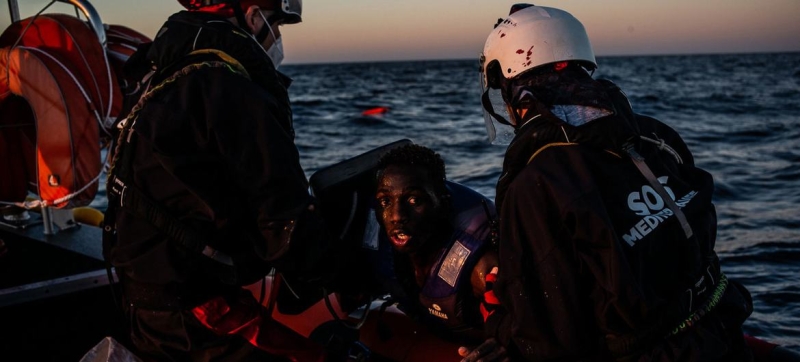
The death toll on the Central Mediterranean Route has already exceeded 1,000 this year. Another deadly shipwreck in the Mediterranean highlights the need for safe migration Refugees and migrants
A shipwreck off the coast of Libya left 42 migrants missing and likely drowned. This is another tragic episode on the central Mediterranean route, where more than a thousand people have already died since the beginning of the year.
According to the International Organization for Migration (IOM), there were 49 refugees and migrants on board a rubber boat that left the city of Zuara in northwestern Libya on November 3. Six hours later, the ship capsized: high waves knocked out the engine, and all passengers – 47 men and two women – were thrown overboard.
The boat drifted on the high seas for six days before Libyan authorities rescued seven men on November 8: four from Sudan, two from Nigeria and one from Cameroon. The missing included 29 from Sudan, eight from Somalia, three from Cameroon and two from Nigeria.
IOM said emergency medical treatment was provided to the survivors, in coordination with local authorities.
The tragedy comes just weeks after a number of other deadly incidents off the coast of Surman (Libya) and the islands of Lampedusa (Italy). According to IOM’s Missing Migrants Project, the death toll on the central Mediterranean route has already exceeded 1,000 this year.
“With this new shipwreck, the total number of casualties has increased further, highlighting the urgent need to strengthen regional cooperation, expand safe and legal migration routes, and improve the effectiveness of search and rescue operations,” the statement said. IOM.
The Central Mediterranean route remains the world’s deadliest, with more than 25,600 people killed or missing since a project tracking the fate of migrants was launched in 2014.
The main causes of death are the length of the route, dangerous smuggling schemes, shortages rescue resources and restrictions on the work of NGOs saving lives on the water. In addition, migrants often cross the sea in overloaded and unseaworthy inflatable boats, which complicates rescue operations, especially when several such boats are launched at once.
